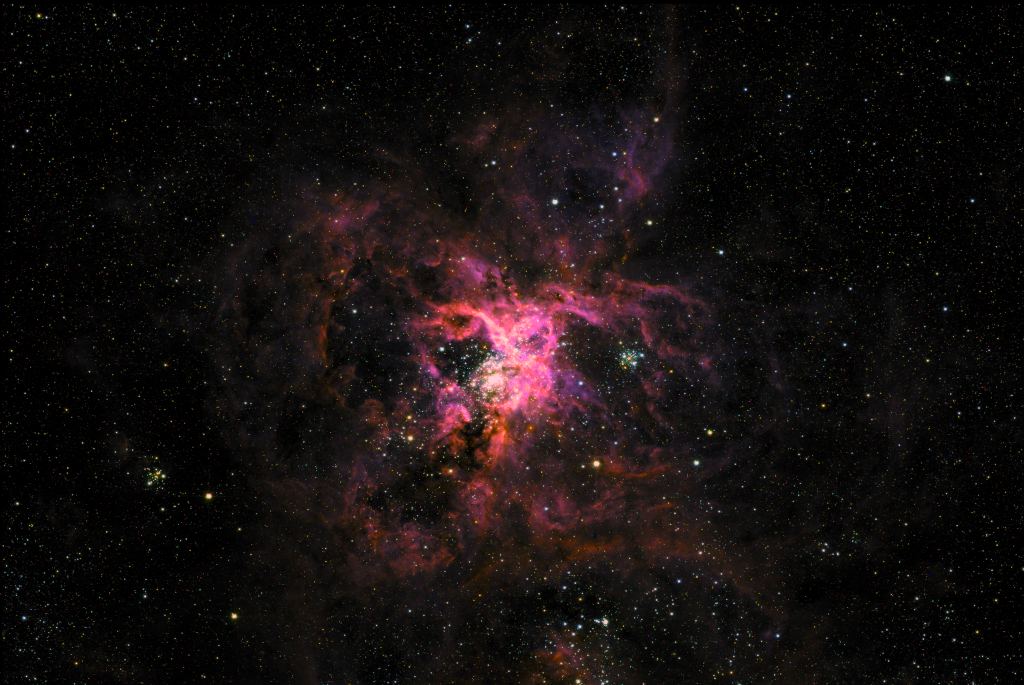2023年4月27日
The Tarantula Nebula from SuperBIT
Image Credit: SuperBIT, NASA
Explanation: The Tarantula Nebula, also known as 30 Doradus, is more than a thousand light-years in diameter, a giant star forming region within nearby satellite galaxy the Large Magellanic Cloud. About 160 thousand light-years away, it’s the largest, most violent star forming region known in the whole Local Group of galaxies. The cosmic arachnid is near the center of this spectacular image taken during the flight of SuperBIT (Super Pressure Balloon Imaging Telescope), NASA’s balloon-borne 0.5 meter telescope now floating near the edge of space. Within the well-studied Tarantula (NGC 2070), intense radiation, stellar winds and supernova shocks from the central young cluster of massive stars, cataloged as R136, energize the nebular glow and shape the spidery filaments. Around the Tarantula are other star forming regions with young star clusters, filaments, and blown-out bubble-shaped clouds. SuperBIT’s wide field of view spans over 2 degrees or 4 full moons in the southern constellation Dorado.
Tomorrow’s picture: alpha camel leopard
SuperBIT影像: 蜘蛛星云
影像提供: SuperBIT, NASA
说明: 跨幅1,000多光年、亦名为剑鱼座30的蜘蛛星云,是隶属于邻近伴星系–大麦哲伦星系的庞大恒星形成区。这团距离我们约16万光年远的星云,是本星系群里最大也最活跃的恒星形成区。在这幅由SuperBIT(超压气球成像望远镜)的0.5分口径望远镜、摄于漂浮在太空边缘的精采影像里,此宇宙级的节肢动物座落在影像的中心附近。在备受探索的蜘蛛星云(NGC 2070)里,强烈的辐射、恒星风及中心年轻大质量恒星群R136的超新星爆炸震波,除了激发星云发出辉光之外,也雕塑出酷似蛛脚的丝状云气。而蜘蛛星云的其他活跃的恒星形成区,通常也拥有年轻星团、云气丝和气泡状云气等结构。这片SuperBIT视野,涵盖了南天剑鱼座方向约2度(4个满月)的天区。 (SuperBIT, Super Pressure Balloon Imaging Telescope 超压气球成像望远镜)
明日的图片: alpha camel leopard



